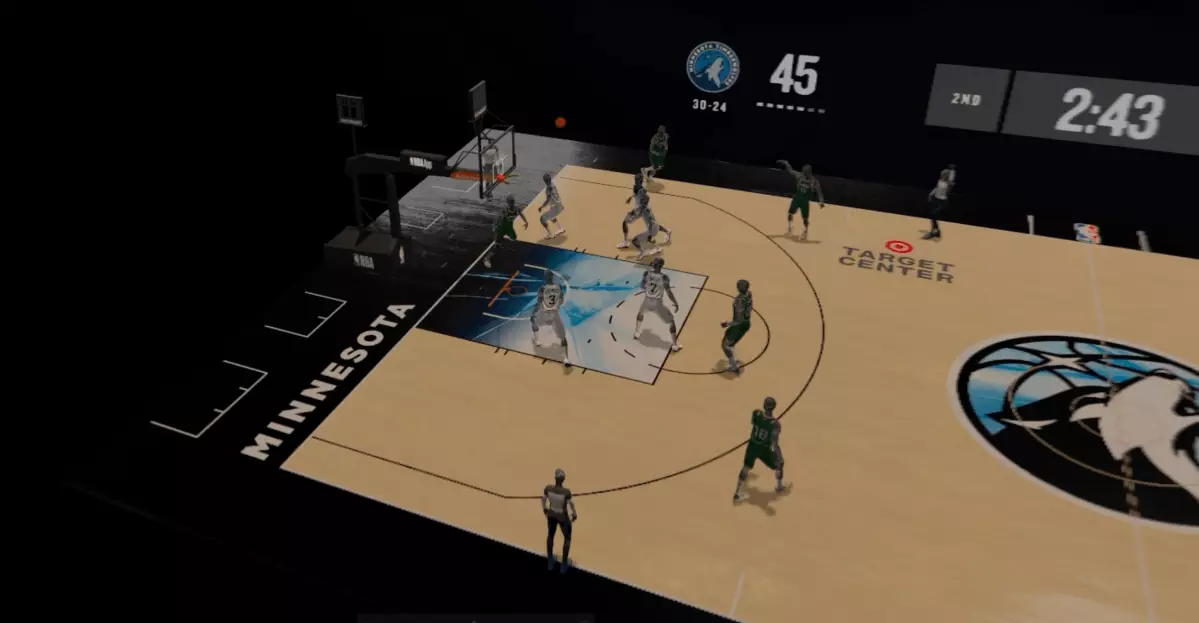The realm of sports entertainment has always been on the cutting edge of technology, and the NBA is once again setting a high bar with its latest innovation. The introduction of an augmented reality (AR) feature to the NBA League Pass, known as Tabletop, is designed to transform how fans interact with live basketball games. This technology not only enhances the viewing experience but also reflects a broader trend in sports toward integrating digital engagement with traditional media.
Tabletop is exclusively available to NBA League Pass subscribers, emphasizing the league’s ongoing commitment to enriching its subscription offerings. This move is both a strategic initiative to drive subscriptions and a way to cater to the needs of tech-savvy fans who crave more engagement during live games. By creating a unique experience that only a segment of fans can access, the NBA effectively positions the League Pass as a premium service, differentiating it from other viewing options available to the general public.
The Tabletop feature allows fans to project a virtual basketball court into their living spaces, providing an immersive experience that goes beyond traditional video feeds. As digital avatars of real players move dynamically on the virtual court, fans can engage with the game in a new way. The avatars, despite their uniform appearance, are differentiated by jersey colors, player names, and numbers, bringing an added layer of authenticity to the experience. During my examination of this feature, it was clear that the anticipation of players’ movements mirrors the real-time on-court action, though there can be slight delays in synchronization with the announcer’s commentary.
This setup creates a unique blend of reality and virtual representation. However, it does raise questions about how effectively fans can engage with two forms of media at once. The minor delays observed, for example, could detract from the immediate thrill of gameplay for some users, especially those who thrive on real-time reactions.
Enhancing the Viewing Experience
One of the most appealing aspects of Tabletop is its alignment with ongoing market trends toward mixed reality. Fans are increasingly accustomed to interactive viewing experiences that allow them to engage at deeper levels with their favorite sports. The NBA’s implementation of this AR technology is a direct response to this demand and exemplifies the evolving nature of sports media. Partnering sports with cutting-edge technology is crucial in capturing the interest of younger audiences who prefer interactive platforms over passive watching.
Additionally, Tabletop is not only limited to games that fans can access via traditional broadcasting; it can also enhance local market games, making content available even when video streaming is not an option. This ensures that fans feel more connected to their teams, despite geographical restrictions. The psychological pull of being part of the action—albeit through avatars—can significantly boost engagement and fan loyalty.
Future Prospects and Considerations
While the NBA has made impressive strides with Tabletop, there remains uncertainty about the extension of this feature to larger events, such as the NBA All-Star weekend. The absence of confirmation from the NBA regarding this feature could leave fans eager for enhanced experiences somewhat disappointed. As technology continues to advance, it is essential for leagues to maintain transparency with their fan base to foster trust and excitement.
Moreover, the NBA will need to ensure that the platform is capable of sustaining a seamless user experience as more users engage with this technology simultaneously. This not only includes addressing potential latency issues but also considering hardware limitations that may affect user experience for varying devices.
The introduction of the Tabletop feature by the NBA is a significant milestone in the realm of sports tech. As leagues continue to explore innovative ways to engage fans through AR and other digital enhancements, the lines between traditional viewing and interactive experiences continue to blur. While challenges remain in synchronization and user experience, the overall prospects for such technology in reshaping how fans experience live sports are promising. As we look toward the future, it is crucial for sports organizations to embrace these innovations, paving the way for more inclusive and engaging fan interactions.


Leave a Reply